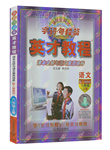As China becomes increasingly urbanized (城市化), it has to find space for its urban and rural
citizens as both groups become increasingly integrated. Experts suggest a
possible model way may be “re-inventing” a “garden city”.
China’s mega-cities are bursting at the borders and
the country is now undergoing the quickest and biggest urbanization in the
history of mankind. It is estimated that by 2025, China will have 400 million
more people living in its cities, raising its urban population to 900 million.
Besides, new satellite towns are mushrooming on the urban fringes while city
ring roads are rippling outwards into the countryside at amazing speed.
Satellite maps collected by Professor Joshua Bolchover at the University of
Hong Kong bring the problem sharply into focus. They track the changing
rural-urban framework in the past 30 years, and suggest that cities are cruelly
destroying surrounding rural land and rapidly reducing the amount of arable (可耕种的) land, which gives way to new residential blocks, new
industrial zones, new financial centers and the other inevitable signs and
signatures of economic growth.
This, however, is not sustainable growth pattern,
especially when China has the world’s largest population to feed. So concerned
urban planners are starting to note the social and physical effects of diaspora
(大移居) when replaced rural communities are
forced into the cities.
On the other hand, a trend of thought is gradually
taking shape and this is the concept of the “garden city”, a combination of
country and city that is being proposed by architects and city planners. Hua
Li, from Tao Architects, is among the many professionals with such a voice. His
argument is supported by a long-term study on this subject. As Hua says, the
answer is to preserve patches of productive farmland within urban boundaries.
Less transportation means we have fresh agricultural products at lower costs
and less carbon emission in the city. And urban farmland can also be showcased
for agricultural tourism and education.
The concept is already practiced at the grassroot
level. Agriculture has gone into the air, up to roof and balcony in some
communities in the cities. It’s common to see organic “hanging garden” on the
roof of some traditional courtyard home. According to some people, the rooftop
project translate to tangible (=" practical)" benefits, such as safe,
nutritious vegetables, a cooler home in summer. Some say thanks to the tomatoes
they plant that are natural insect killers, there’re fewer mosquitoes. Apart
from these, it also contributes to better bonding with neighbors. Zhang, a
doctor in Beijing, began creating his hanging garden five years ago. Since his
garden became home to 30 kinds of vegetables and fruit --- all enough to feed
his family, neighbors have enjoyed dropping by for a relaxing chat or just to
see how well the lovely vegetables and fruit are doing.
Although people like Zhang are still rare and the
greening of roof space with vegetables and fruit takes skill and energy, with
more positive media exposure and advanced technology there is the prospect that
garden city will become common practice in the near future. By then, cities
will no longer look so gray when seen from the satellites.
1.Some experts suggest re-inventing a “garden city”
because ______.
A.it is the
only model way to save the cities
B.it helps stop
destroying the rural areas
C.increasing
urbanization takes place in China
D.China has the
largest population to feed
2.What is the purpose of paragraph 2?
A.To show the
experts’ concern about the increase of population.
B.To persuade
people into supporting economic growth in cities.
C.To explain
the reasons for the change of rural-urban framework.
D.To inform the
readers of the consequences of quick urbanization.
3.In Hua Li’s opinion, a combination of country and
city will ______.
A.benefit the
environment and lower living costs
B.become a
project that needs a long-term study
C.lead to more
rural communities being replaced
D.attract more
farmers to take tours in cities
4.Zhang is mentioned (Paragraph 5) to show that
______.
A.he achieves
his dream to own a hanging garden
B.hanging
gardens are becoming more popular
C.the garden
contributes to a better neighborhood
D.he is a
pioneer to practise the gardening concept
5.As for the concept of the “garden city”, the writer
feels ______.
A.desperate B.hopeful C.disappointed D.concerned

 字词句段篇系列答案
字词句段篇系列答案